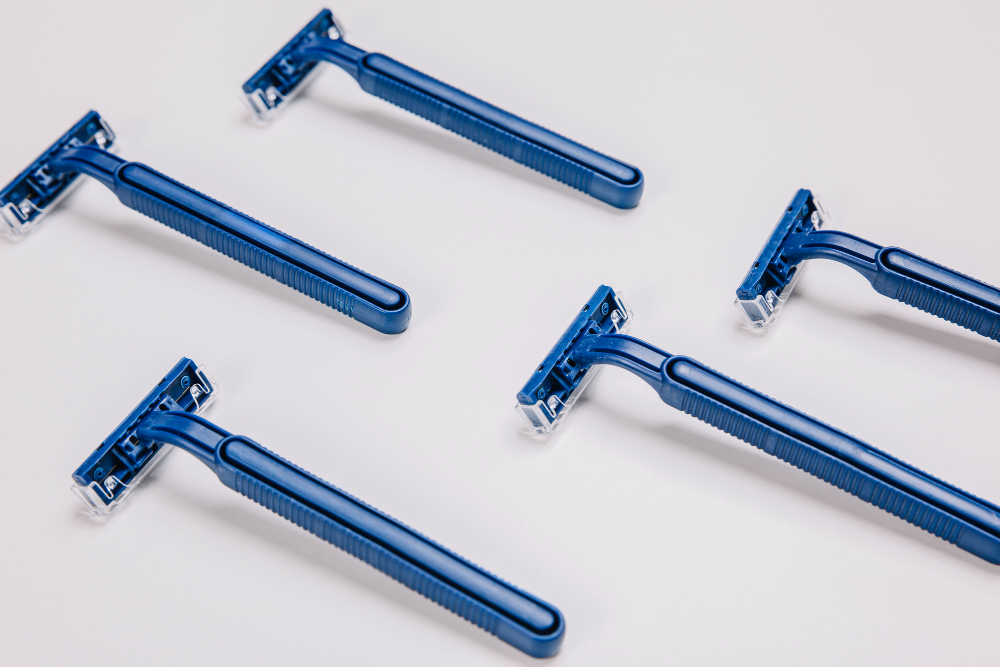
Let’s admit it, disposable razors are a savior when it comes to quick grooming routines. They’re convenient, budget-friendly, and great for on-the-go use. However, they’re not designed to stick around forever. While these tools are typically engineered for single or occasional use, you may wonder, “How long does a disposable razor really last?” Well, you’re in the right place!
A Disposable Razor’s Lifespan: The Overview
The average disposable razor can serve you well for approximately 5 to 10 shaves before it begins to feel blunt, or worse, cause discomfort. But remember, this is not set in stone. The longevity of your razor hinges on numerous factors such as the quality of the razor itself, the thickness of your hair, the frequency of your shaving routine, and your maintenance habits. Let’s break down these elements further.
Decoding the Lifespan of a Razor: The Influencers
Here are the essential aspects that can influence the endurance of your disposable razor:
- Quality of the Razor: The life expectancy of a razor is significantly affected by its quality. Superior razors equipped with sharp blades, multiple-blade cartridges, and lubrication strips usually offer longer-lasting, comfortable shaves compared to their lower-priced, single-blade counterparts.
- Hair Density: If you have thicker or coarser hair, your razor blades might wear out faster than they would with finer hair. Dense hair growth may require you to switch out your disposable razor more frequently.
- Shaving Frequency: If you’re a daily shaver, chances are you’ll have to replace your razor more often than someone who shaves less frequently. The rate of usage directly impacts blade wear and tear.
- Shaving Technique: Excessive pressure during shaving, shaving against the grain, or dry shaving can increase friction, leading to quicker blade wear-out.
- Maintenance: Proper cleaning, drying, and storing of your razor can prolong its lifespan by preventing rust, bacterial accumulation, and blade dulling.
Squeezing the Most Out of Your Razor: Best Practices
Let’s look at some useful tips to help you extend your disposable razor’s performance:
- Rinse and Clean: Ensure to rinse your razor thoroughly with warm water after each use to clear off hair, shaving cream, and skin debris. This helps avoid build-up on the blades, maintaining their sharpness.
- Dry It Off: Excessive moisture can cause rust and bacterial growth. Dry the razor gently with a towel or use a hairdryer on a low setting. Be careful not to wipe the blades; it can dull them.
- Store Properly: Stow your razor in a dry, well-ventilated area to deter moisture build-up. Steer clear of leaving it in the shower as the humid environment can hasten rusting. Use a razor cover or a specific holder to protect the blades.
- Shave Smart: Make shaving cream or gel your best friend as it helps lubricate the skin and reduce friction. Try shaving with the grain to minimize irritation, and don’t press too hard; it can harm the blades.
Identifying When Your Razor Calls It Quits
Understanding when to replace your disposable razor is crucial. Here are the tell-tale signs that it’s time to say goodbye:
- Dull Blade: If your razor is pulling or tugging at the hair rather than gliding smoothly, it’s probably dull. Shaving with a blunt blade can cause discomfort and result in nicks and cuts.
- Irritation: Heightened skin irritation, redness, or razor burn post-shave might indicate that your razor has lost its efficiency and needs to be replaced
- Rust or Damage: Spotting visible rust, chipped blades, or any other form of damage on your razor? It’s time to replace it promptly to prevent potential skin damage.
Revisiting Razor Choices: The Environmental Aspect
While disposable razors may score high on convenience, they contribute to the creation of plastic waste, raising environmental concerns. In fact, the U.S. alone discards over 2 billion disposable razors annually. If you’re keen on reducing your environmental footprint, here are a few alternatives to consider:
- Safety Razors: These are reusable razors with a metal handle and a replaceable double-edged blade. They promise a close, smooth shave and are cost-effective in the long run, given that you only need to replace the metal blades which can be recycled.
- Cartridge Razors: These razors have a reusable handle with replaceable blade cartridges. While the cartridges are typically plastic, some brands offer recycling programs or eco-friendly options made from recycled materials.
- Razor Recycling Programs: Some manufacturers and organizations have established razor recycling programs that collect, recycle, and repurpose used shaving products, reducing landfill waste.
Bringing It All Together
In conclusion, the number of shaves you can get from a disposable razor depends on various factors, including the razor’s quality, your hair type, your shaving habits, and your maintenance routine. By adopting the strategies outlined in this guide, you can optimize the lifespan of your razor and enjoy a comfortable, smooth shaving experience.
Remember, the key is to clean, dry, and store your razor properly, and to remain vigilant for signs that it’s time for a replacement. Regardless of whether you’re a daily shaver or an occasional groomer, this comprehensive guide has got you covered.
For those conscious of sustainability, considering alternatives to disposable razors and engaging in razor recycling programs can be an effective way to reduce your environmental impact. Here’s to a smooth and responsible shaving journey!
Last update on 2024-04-20 / Affiliate links / Images from Amazon Product Advertising API
Affiliate Disclosure: This post contains affiliate links, which means I may receive a small commission, at no extra cost to you, if you make a purchase using these links.

Jay Kang
Just because i'm asian does not mean I don't need shaving. I always wanted to grow a beard when I was young, now I need to shave because hair growth for me is a problem. I'm going through what every man will and has gone through before.





